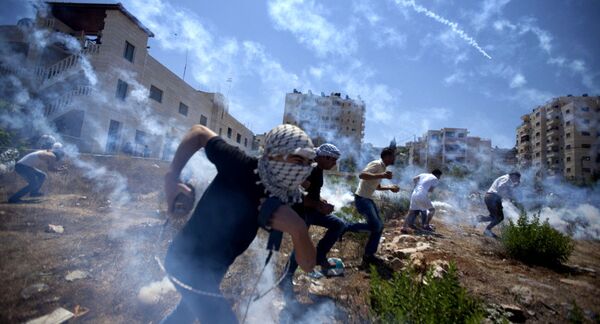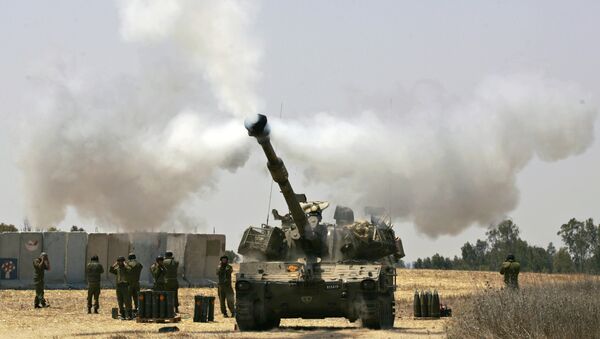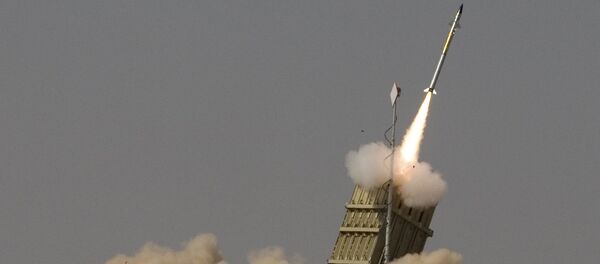Two Palestinians, including a 14-year-old teen, were killed and 90 others injured as a result of shots fired by Israeli forces at the Gaza Strip border area with Israel on Friday. The Israeli military maintains that its fire has been directed against protesters throwing Molotov cocktails, rocks and other projectiles at the security fence and IDF troops. The new casualties come following news last week that 21-year-old Aviv Levi, an IDF soldier, had been killed by a Hamas sniper at the Gaza border, becoming the first Israeli casualty over the last four months of violence in the region.
According to Jerusalem Post observer and former Israeli special forces soldier Yossi Melman, there's plenty of evidence to suggest that the protests on the Palestinian side have been inspired or even financed by Hamas, the de facto governing authority of the Gaza Strip since 2007. Two times this month, he wrote, the prospects of a full-scale war in the border area became a real possibility and were only narrowly avoided.
According to Yossi Melman, Fridays, a Muslim holy day, when Gazans are often exposed to sermons inciting violence, are a particularly dangerous period, where "each minor incident" has "had the potential to get out of hand and turn into a major escalation, a lead-up to a war."
Such a situation has already been narrowly avoided twice in the month of July, the observer noted, including on July 13, when the Israeli Air Force attacked an arson balloon launch pad and killed Hamas militants, prompting Hamas to retaliate by shelling Israeli settlements, and a counter-retaliation by the Israelis against 40 Hamas and Palestinian Islamic Jihad targets. A week later, on July 20, an Israeli soldier was killed while patrolling on the border, prompting Israel to launch a massive air attack against 30 more Gaza targets, including two battalion bases.
Each time, the skirmishes could have escalated, notwithstanding the fact that both sides did not want a full-blown war, according to Melman. However, the analyst recalled that neither side seemed to want the July 2014 war either, but it happened anyway, with the seven-week conflict claiming the lives of 67 Israeli soldiers and 6 Israeli civilians, and between 2,125 and 2,310 Gazans, 70 percent of which were civilians, according to Gaza's Ministry of Health. That conflict left thousands of buildings in Gaza in ruins, further weakening the territory's already decrepit infrastructure.

Unfortunately, the latest ceasefire, including a Hamas pledge not to fly its arson kites, not to launch rockets, and not to send activists across the border, in exchange for a halt in Israeli military operations, will not hold for more than a few weeks, security analysts say.
"This is because the basic problems of Gaza and its two million residents, who have been taken … hostage by Hamas – and to a lesser degree Israel – have remained," Melman wrote. "As long as the two sides do not resolve the basic issues and … stumbling blocks, as long as Gaza will continue to be poor and on the verge of a humanitarian disaster, it will remain a source for war," he warned.
The 2018 Gaza protests, which began on March 30, are estimated to have now led to over 140 deaths and between 14,000 and 15,000 injuries on the Palestinian side, according to the Gaza Ministry of Health. One Israeli soldier has been killed, with six IDF soldiers and five Israeli civilians having received injuries.





